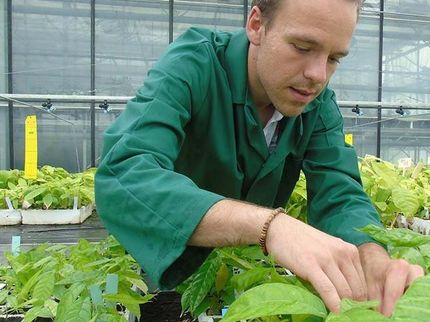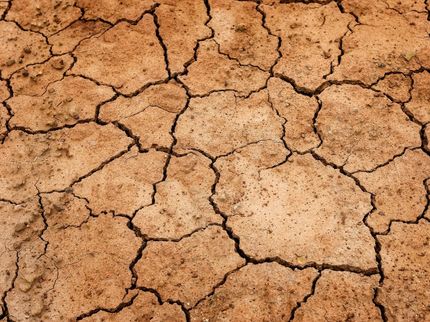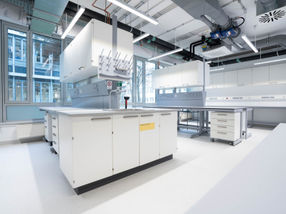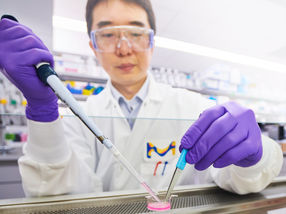Quinoa meets AI: New climate-resilient varieties for the Peruvian highlands
Breeding success: Three new quinoa varieties adapted to the extreme climate of the Altiplano secure food and income for small farmers
Advertisement
artificial intelligence makes it possible: three new quinoa varieties specially adapted to the extreme climate of the Peruvian highlands are the result of an extensive research project by the Universidad Nacional del Altiplano (UNAP) in Peru, the University of Hohenheim in Stuttgart and the plant breeding company KWS SAAT SE & Co. KGaA. The new varieties combine high yields, shorter growing times and improved tolerance to the adverse conditions of climate change. They were officially handed over to representatives of the two traditional population groups of the highlands at a festive field day at the UNAP testing station in Camacani on Lake Titicaca at the end of April 2025. With this corporate social development project, KWS is supporting local farmers and directly passing on the expertise needed to breed and multiply the seeds.
Climate change affects almost all regions of the world. However, it is being felt particularly strongly in mountain regions, where warming is progressing faster than the global average. Due to their particular location and climatic conditions, this has a significant impact on agriculture.
This is also the case in the Peruvian highlands, where quinoa (Chenopodium quinoa) is grown alongside other crops such as maize, field beans and barley. Quinoa has good nutritional properties and is a staple food for small farmers in the Andes region.
In recent years, the weather in the Altiplano, an extensive plateau in the Andes, has become much less stable. The clearly defined rainy and dry periods that were common until a few decades ago, during which small farmers could plan their sowing, no longer exist. The start of the rainy season has become more irregular, meaning that farmers have to adapt to new sowing dates at short notice. In addition, the growing season can be shortened by one to two months in dry years.
A decade of intensive research
"Against this backdrop, there is an urgent need to breed plants that can cope with lower rainfall, yet still deliver high yields and, above all, mature faster than conventional varieties," explains Prof. Dr. Karl Schmid from the Department of Crop Biodiversity and Breeding Informatics at the University of Hohenheim.
The University of Hohenheim and the Universidad Nacional del Altiplano in Puno, Peru, have jointly dedicated themselves to this task as part of a Corporate Social Development Project of the plant breeding company KWS in Einbeck. In this way, KWS is assuming social responsibility in disadvantaged regions in various projects and contributing its breeding expertise. The aim was to support Peruvian farmers, who often lack the resources for cost-intensive and rapid breeding of climate-resistant varieties.
Just over a decade ago, the project participants began crossing six of the most commonly cultivated quinoa varieties in Peru at the time - mainly traditional landraces - and producing thousands of offspring. The regional farmers were involved in every step of the process.
Artificial intelligence makes it possible
Over several years, the project participants tested characteristics of these crosses such as yield, yield stability, disease resistance and frost tolerance at various locations in the Peruvian highlands. In the end, they were able to select three varieties that combine the desired characteristics - high yields and a shorter ripening period: Anmusa Kancharani, Anmusa Taquile and Anmusa Athoja.
The use of artificial intelligence made an important contribution here: for example, hundreds of photographs of quinoa plants in the test fields in Peru were evaluated using deep learning image analysis in order to better estimate the yield. This made it possible to genetically characterize the shape and density of the inflorescences - important traits for yield formation.
Far-reaching effects beyond pure breeding success
"It is particularly noteworthy that the seed is made available to farmers free of charge," emphasizes Prof. Dr. Schmid. "In this way, we want to ensure that small farmers also benefit from the progress of current breeding research
With the help of UNAP, the smallholder communities want to set up their own small companies to propagate the seeds. In this way, the project participants want to promote the sustainable use of the new varieties and at the same time create economic incentives for the region.
"In addition to breeding new varieties, the project is also a prime example of training the next generation," says Prof. Dr. Schmid. In order to strengthen plant breeding expertise in Peru in the long term, Peruvian scientists were comprehensively trained in a variety of practical methods under his leadership and in close cooperation with UNAP.
"A Peruvian doctoral student, who will soon be doing his doctorate at the University of Hohenheim, and around two dozen agricultural science students at UNAP were involved in the project and learned about state-of-the-art plant breeding methods," he says. "Thanks to the rapid advances in AI technology, these can now also be used for less common crops such as quinoa and in countries of the Global South."
Note: This article has been translated using a computer system without human intervention. LUMITOS offers these automatic translations to present a wider range of current news. Since this article has been translated with automatic translation, it is possible that it contains errors in vocabulary, syntax or grammar. The original article in German can be found here.
Other news from the department science
Most read news
More news from our other portals
See the theme worlds for related content
Artificial intelligence (AI) for food and beverages
Artificial intelligence (AI) is optimizing the food and beverage industry through automated quality control and more accurate demand forecasting. AI plays a particularly important role in product development by analyzing taste preferences and market trends. This allows new products to be developed that are better tailored to consumer needs, increasing efficiency and customer satisfaction.

Artificial intelligence (AI) for food and beverages
Artificial intelligence (AI) is optimizing the food and beverage industry through automated quality control and more accurate demand forecasting. AI plays a particularly important role in product development by analyzing taste preferences and market trends. This allows new products to be developed that are better tailored to consumer needs, increasing efficiency and customer satisfaction.























































